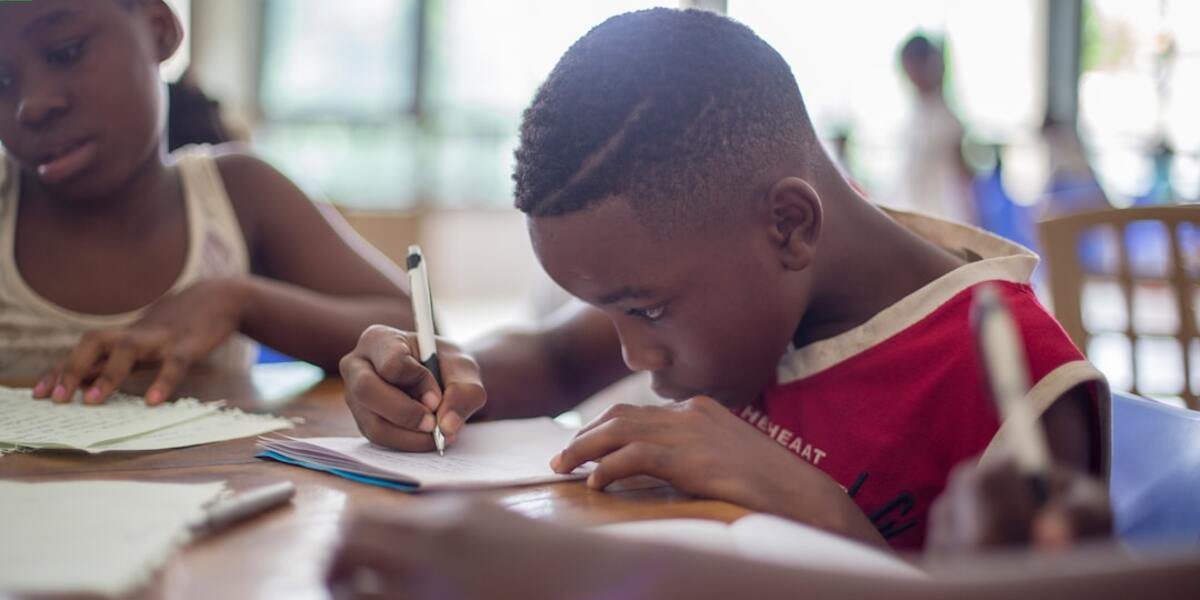Reading Class: A Comprehensive Guide to Boosting Childhood Literacy
“Reading Class: More than just a period where children flip through pages of books, it’s an avenue for them to improve their literacy skills and enhance cognitive development. The impact that an effective reading class can have on childhood education is immense, providing the necessary foundation upon which all other aspects of learning are built.
This comprehensive guide will help you understand how to best support your child through this critical stage in their elementary school education by providing knowledge from diverse angles. It will outline the essential components involved in boosting childhood literacy and offer insights into maximizing every reading class.
Did you know?
Developing a daily reading habit can expand a child’s vocabulary by approximately 1,000 words per year, teaching them almost three new words every day.
Enhancing Comprehension Skills in Elementary Reading Classes
In today’s fast-paced digital world, elementary reading classes still hold a significant place in childhood education. With the onus to ensure students develop strong comprehension skills at an early age, educators are tasked with tailoring lessons that not only engage but provide practical learning experiences for children. The role of reading class is dual-fold; it serves as an essential pathway towards understanding text and lays the foundation for burgeoning critical thinking abilities.
Adopting new strategies becomes paramount when aiming to enhance comprehension skills in elementary school pupils within these reading classes. In this context, interactive techniques engender active participation and kindle interest among young learners providing them with ample opportunities to absorb information more effectively than conventional methods of teaching might allow.
Moreover, individualized attention during these sessions ensures every student feels heard and understood leading to improved self-esteem which ultimately reflects in their academic performance as well. Adapting instruction according to each child’s pace guarantees greater absorption thereby enhancing their overall ability to comprehend texts from different genres they encounter over time.
Strategies for Building Vocabulary and Understanding
Building strong vocabulary skills and enhancing understanding is crucial in any elementary reading class. Today, innovative teaching tactics are designed to help children master new words effortlessly while promoting comprehension. Let’s dive into some successful strategies perfect for the 2023 classroom environment.
1. Context Clues: Encourage your students to use context clues within sentences when they encounter an unfamiliar word during a reading class session. This strategy not only enhances their vocabulary but also boosts their problem-solving abilities.
2. Word Games: Introduce games like Scrabble or Boggle in the reading class routine as these can be excellent tools for building a robust word bank, all while keeping learners engaged.
3. Reading Aloud Daily: Have students read aloud daily from various texts – books, magazines papers etc., This practice will expose them to different types of language patterns and enrich their vocabulary over time.
Techniques to Foster Critical Thinking Through Text Analysis
As we navigate through the fascinating world of elementary school education in 2023, it’s important to focus on enhancing comprehension skills. One significant area where these skills play a crucial role is within reading classes. More specifically, fostering critical thinking through text analysis can significantly enhance learning outcomes.
Foster critical thinking in your child during their reading class with these effective techniques:
Start by making data visualization routine: It allows children to identify patterns and relationships that aren’t always apparent from raw data. Encourage them to depict information creatively – charts, diagrams or even simple drawings.
Next up is encouraging questions over answers: The goal isn’t just for students to understand what they’re reading but also inquire into its meaning deeply. Ask them thought-provoking questions about content matter as this stirs curiosity and encourages hypothesis-making.
Another technique involves teaching kids how to evaluate resources critically; whether an article online or library books – train them early on assessing material validity before using it as a reference point for their personal understanding.
Lastly, advocate active reflection – post every task/session let youngsters spend few minutes pondering over what was learned/achieved/inference made etc., This will encourage introspection essential for knowledge retention while molding independent thinkers out there!
Innovative Approaches to Engage Young Learners in Reading Class
In our rapidly evolving digital world, we engage young learners in the reading class with innovative approaches. These methods redefine learning dynamics at the elementary level. The goal isn’t just ‘reading,’ but creating a meaningful and immersive experience that holds student interest.
For example, integrating augmented reality (AR) into reading sessions makes static texts interactive. This teaches children more than alphabets and simple words; it fosters an early love for stories, characters, and creative thinking.
Furthermore, providing personalized learner pathways is another progressive strategy being used by proactive educators today. With artificial intelligence-enabled tools at their disposal teachers are able to identify students’ individual strengths and weaknesses when it comes to reading skills . They then adapt lessons accordingly provide exercises tailored specifically towards improving areas of weakness while also building on existing strengths which ultimately fosters confidence makes learning engaging effective process all around .
Finally we cannot underestimate power physical books still hold classic approach using printed materials combined with newer methods like e-books audio options appealing different types learners emphasis should be fostering love literature promoting holistic development child through comprehensive balanced educational system That’s exactly what aim achieve these innovative strategies classroom setting.
Incorporating Interactive Media and Storytelling
In this era of rapid technological development, incorporating interactive media into your reading class has become paramount. Interactive media is a powerful tool that not only makes learning fun but also enhances comprehension in young learners.
One innovative way of using interactive media in the reading classroom involves integrating digital books and applications. These digitized texts often come with highlighted words, read-along audio, and clickable glossaries embedded right into the story’s content which helps students build vocabulary skills while they read along.
Interactive storytelling platforms are another excellent resource to utilize. Platforms like “Storybird” or “Storyboard That”, used by numerous educators worldwide allow children to create their own narratives within a highly visual interface. This encourages creativity while teaching vital components such as plot structure and character progression – all important factors for successful readership.
Moreover, harnessing augmented reality (AR) technology can add an entirely new dimension to how we teach our youngsters in the reading class. AR apps can bring stories from flat pages directly onto three-dimensional space!
Don’t forget about podcast-style storytellings either! With podcasts becoming increasingly popular among youth crowd in 2023 – consider subscribing them top-rated educational ones catering specifically towards elementary-aged kids; these offer great listening practice alongside engaging plots full of excitement making reluctant readers more likely engage actively during lessons again !
Gamification of Learning: Boosting Motivation and Participation
Gamification of learning has become a revolutionary approach in the landscape of elementary school education. As think tanks and educators work tirelessly to engage young learners, especially during reading class, this tactic presents an innovative solution.
Firstly, introducing game-based elements into a traditional reading environment is proven effective to boost motivation. Take flashcards for example; they can be incorporated into quick-fire question-and-answer games that not only reinforce knowledge but also add fun and excitement. Likewise, digital quizzes or trivia competitions about characters or events from books read in class can energize students’ interests.
Lastly yet importantly , using these strategies helps create positive attitude towards Reading Class within pupils; They begin seeing as more than just another lesson plan rather opportunity express their competitive streak while absorbing valuable literary skills simultaneously thus making whole process engaging enjoyable . After all isn’t creative thinking what we want ignite minds our future generation?
Assessing Progress in Elementary School Reading Classes
Assessing progress in elementary school reading classes is a fundamental component of childhood education in 2023. In this era marked by rapid advances in technology and shifting educational paradigms, the value placed on foundational skills such as reading hasn’t waned. Rather, with increased attention paid to individual learning needs and styles, it has become even more crucial for educators to gauge students’ development accurately.
At its core is an understanding that each child’s journey towards literacy unfolds at their own pace. As parents or guardians navigating these formative years alongside educators, recognizing those milestones becomes essential because they are determinant factors of how well children navigate future academic challenges.
Measuring progress isn’t just about identifying which books your child can read independently or fluently either. There’s much complexity woven into this process; from interpreting text meaningfully to drawing connections between what’s being read and existing knowledge – these aspects all contribute significantly towards overall comprehension abilities.
This comprehensive evaluation approach fosters learners who not only grasp language but have been scaffolded properly through the intricacies that come along with mastering it. It promotes readers who critically think – ones capable of dissecting complex narratives keeping emotional intelligence intact while also boosting confidence levels substantially over time.
Methods for Regular Monitoring of Student Reading Levels
In the elementary educational system, regular monitoring of student reading levels is critical to ensure that each child progresses at an optimal rate. With advancements in education methodology and technology, multiple approaches can be used for assessing progress in a reading class.
Another useful technique entails systematic questioning after every reading session. Besides helping affirm understanding, it also aids educators gauge whether students grasp not only literal meanings but inferential ideas too from texts they read.
Moreover, periodic quizzes and tests provide valuable insights into how well children understand what they’re learning over time as well as evaluate literacy growth on different parameters such as vocabulary acquisition and command over language structures among others.
Utilizing Feedback Systems for Continuous Improvement
In today’s digital age, the feedback systems in place for assessing progress in elementary school reading classes are essential tools that can lead to continuous improvement. Parents and educators need to be aware of how these systems work for the benefit of their children.
Feedback Systems importantly assist teachers in identifying learning gaps early on which is significant during this foundation stage – Elementary School Education. With real-time evaluations integrated into a typical reading class routine, it allows quick adaptations by addressing insufficient skills right away, thus avoiding future hurdles on advanced topics.
Be it manual or automated like technological solutions; an effective feedback system provides detailed information about every child’s performance whilst participating within a reading class setting. Every student has distinct levels of comprehension and absorption rates with regards to phonics, vocabulary development & understanding sentence structure among others – all crucial elements when developing efficient readers from young minds.
Moreover, another advantage tied up with utilizing an established feedback system pertains not only towards pupils’ academic growth but also touches socio-emotional aspects too! By giving praises where its due or constructive criticisms whenever necessary- both have shown improvements confidence-wise amongst students who’re still at such tender years between 6-11yrs old – Age range typically under Elementary education spectrum!
Conclusion
In wrapping up, it’s clear that a strategic reading class can make an enormous difference in boosting childhood literacy. Tailored lesson plans and engaging materials foster a love for learning, setting children on the path to success both inside and outside of school walls. Remember, Rome wasn’t built in a day; by steadily nurturing their skills at each developmental stage with persistent practice sessions at home or even using specialized apps alongside supporting them emotionally—we’re equipping our young ones with the gift of literate expressiveness.
Take time to browse through our other articles available right here! We’ve got plenty more insights around educating children effectively while offering exceptional support content tailored towards parents and educators alike. Our aim is always simple—the growth, happiness, and success of your child matter most!
Dive deeper into this trove filled with expert tips because when we say no stone will be left unturned regarding your child’s education journey —we mean it.







